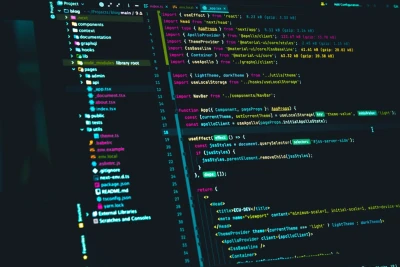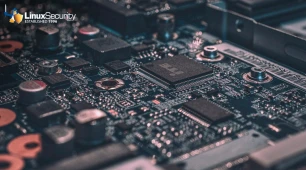
Open-source AI offers many opportunities, including high levels of innovation, while also presenting security admins with unique challenges. Leaders in AI, such as Clem Delangue from Hugging Face and Rahul Roy-Chowdhury from Grammarly, stress the significance of transparency and ethical decision-making when building trustworthy AI systems. Delangue advocates for greater transparency even at the expense of performance, while Roy-Chowdhury notes how open-source AI provides transparency for otherwise opaque systems that would otherwise remain hidden and untrustworthy.
Yet transparency can be both a blessing and a curse. Geoffrey Hinton warns that adversaries can weaponize openly available AI models. Compromised libraries in repositories like PyPI and npm are also a threat and can expose vulnerabilities. In this article, we dive deep into these issues, offering practical advice for how security admins can leverage transparency to increase security. We also share essential practices to secure open-source AI projects against potential risks.
Ethical Transparency in Open-Source AI
 Clem Delangue, CEO of Hugging Face, is an outspoken proponent of ethical transparency in open-source AI projects. He believes that open-source projects, although perhaps lacking some performance metrics compared to proprietary solutions, ultimately produce safer and more sustainable outcomes. Delangue also asserts that transparency forces developers to prioritize responsible decision-making over short-term performance considerations in favor of long-term ethical integrity and security.
Clem Delangue, CEO of Hugging Face, is an outspoken proponent of ethical transparency in open-source AI projects. He believes that open-source projects, although perhaps lacking some performance metrics compared to proprietary solutions, ultimately produce safer and more sustainable outcomes. Delangue also asserts that transparency forces developers to prioritize responsible decision-making over short-term performance considerations in favor of long-term ethical integrity and security.
Rahul Roy-Chowdhury, CEO of Grammarly, also emphasizes the significance of transparency for AI development. He asserts that open-source AI provides sunlight that illuminates what can otherwise be an opaque area, enabling both users and developers to inspect its safety and security features quickly. According to Roy-Chowdhury, Open Source is the optimal model to achieve transparency, ensuring that AI technologies remain innovative, trustworthy, and accountable.
The Risks of Transparency in Open-Source AI
Despite its ethical advantages, open-source AI's transparency also poses several significant risks. For instance, open-source libraries like PyPI and npm have been in the spotlight for hosting malicious packages. This discovery shows how open-source libraries remain under constant attack despite implementing precautionary security measures, making them inherently risky for open-source AI development.
Geoffrey Hinton, an influential figure in AI research and development, recently voiced concerns over open-sourcing AI models, likening it to open-sourcing nuclear weapons. Hinton contends that making these AI models freely accessible may allow malicious actors to fine-tune these models for malicious use, highlighting open-source AI's significant global security risks.
Best Practices for Secure Code Use
 Linux and open-source security admins need to adopt specific best practices to reduce the inherent risks of transparency while reaping its benefits. Admins should begin by carefully scrutinizing which libraries and dependencies they integrate into their systems and only using source code from trusted repositories regularly updated to protect against vulnerabilities.
Linux and open-source security admins need to adopt specific best practices to reduce the inherent risks of transparency while reaping its benefits. Admins should begin by carefully scrutinizing which libraries and dependencies they integrate into their systems and only using source code from trusted repositories regularly updated to protect against vulnerabilities.
Automated code scanning and auditing tools can also significantly increase security. Such tools help identify vulnerabilities in third-party libraries before they're exploited. Maintaining an effective code review and continuous integration process can further protect against introducing unsafe or malicious code into production environments.
Another essential practice involves engaging the broader open-source community. Security admins must stay informed about emerging threats while working collaboratively to create solutions with other community members. In addition, open communication channels enable quicker identification and resolution of security issues by harnessing collective knowledge and resources.
Regulatory Perspectives
The debate between open-source AI and proprietary AI touches upon technical and ethical considerations as well as regulatory ones. Sam Altman, CEO of OpenAI, advocates for some level of AI regulation. His perspective is supported by high-profile figures like Elon Musk and Andrew Ng, who recognize the need to oversee applications that pose significant risk. Altman has advocated for a US-led global coalition to regulate AI more efficiently to maximize benefits while mitigating risks.
Legislative efforts such as the EU Artificial Intelligence Act and various US initiatives - from executive orders for transparency to state-level regulations - demonstrate an increasing recognition of the need to balance innovation with safety. Such regulations seek to categorize AI risk and prohibit unacceptable use cases while creating a secure environment for AI development and deployment.
Examining The Future of Open-Source AI
 Mark Zuckerberg and other industry leaders, such as Jensen Huang of NVIDIA, support open-sourcing AI models, believing they promote more rigorous analysis and community-driven improvements. According to Zuckerberg, open source technology ensures a broader distribution of benefits among companies, regardless of potential risks involved, with open-source systems being more secure due to transparency and public scrutiny.
Mark Zuckerberg and other industry leaders, such as Jensen Huang of NVIDIA, support open-sourcing AI models, believing they promote more rigorous analysis and community-driven improvements. According to Zuckerberg, open source technology ensures a broader distribution of benefits among companies, regardless of potential risks involved, with open-source systems being more secure due to transparency and public scrutiny.
However, not everyone embraces open-source AI with such enthusiasm. Geoffrey Hinton's connection to nuclear weapon development highlights its serious risks of misuse. There must be a balance between innovation and the collaboration that open-source fosters, as well as the security controls enforced by proprietary systems.
Our Final Thoughts on Balancing Security with Transparency in Open-Source AI
Open-source AI presents both opportunity and risk. The transparency inherent to these projects can create more muscular, more ethical, and more accountable AI systems; leaders like Clem Delangue and Rahul Roy-Chowdhury recognize its significance for building trust and encouraging responsible AI development. However, risks such as compromised open-source libraries or concerns over misuse cannot be ignored.
Linux and open-source security admins need to maintain an atmosphere of transparency while applying best practices in terms of security, such as using trusted repositories for code storage, using automated scanning tools to scan for security risks, engaging with open-source community involvement, and monitoring regulatory changes. By striking this balance between transparency and best security practices, these administrators can harness the benefits of AI while protecting themselves against its risks, guaranteeing an innovative AI future that remains safe.
Do you think the benefits of open-source AI outweigh the risks? Reach out to us @lnxsec and share your thoughts. We'd love to discuss this with you!
















